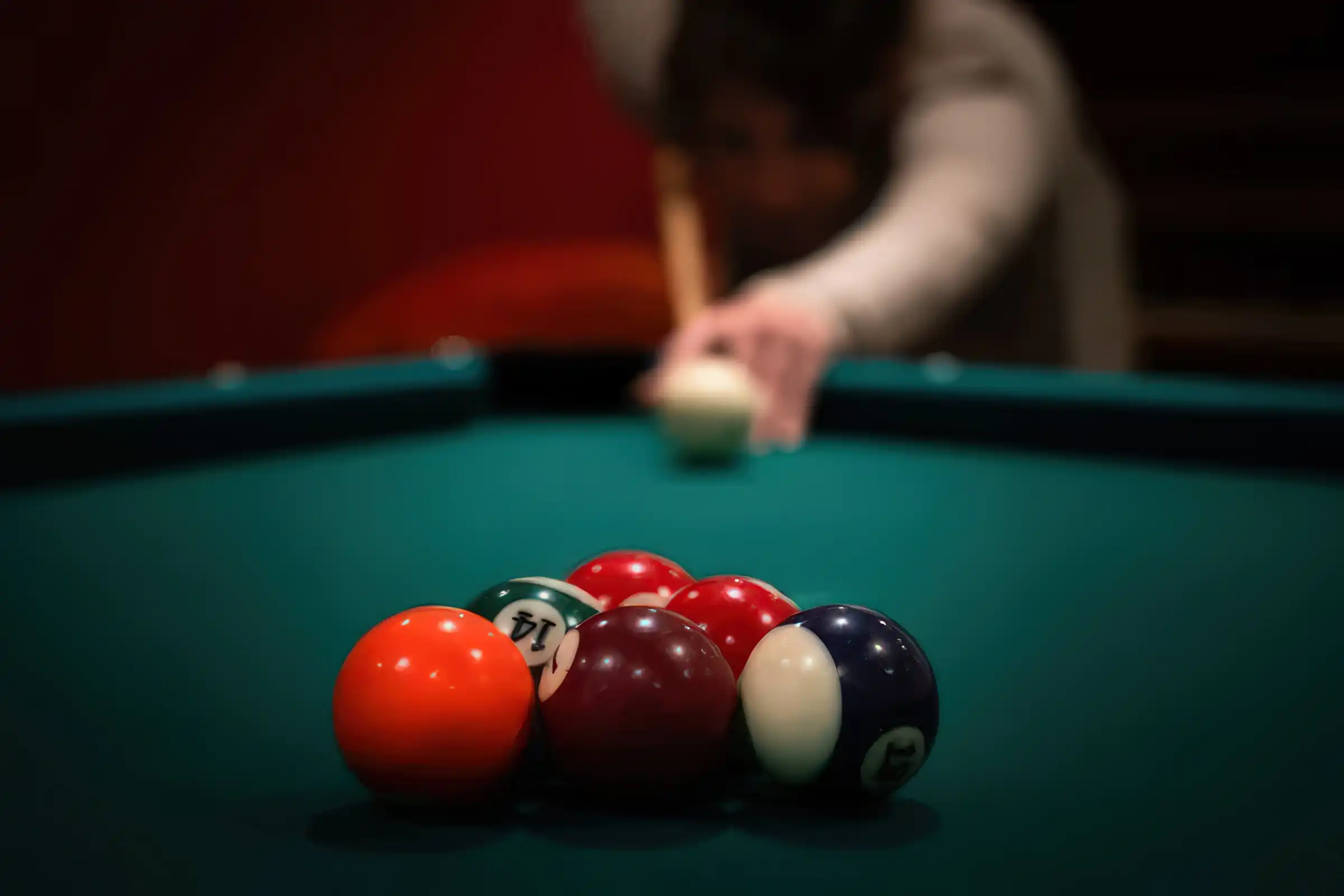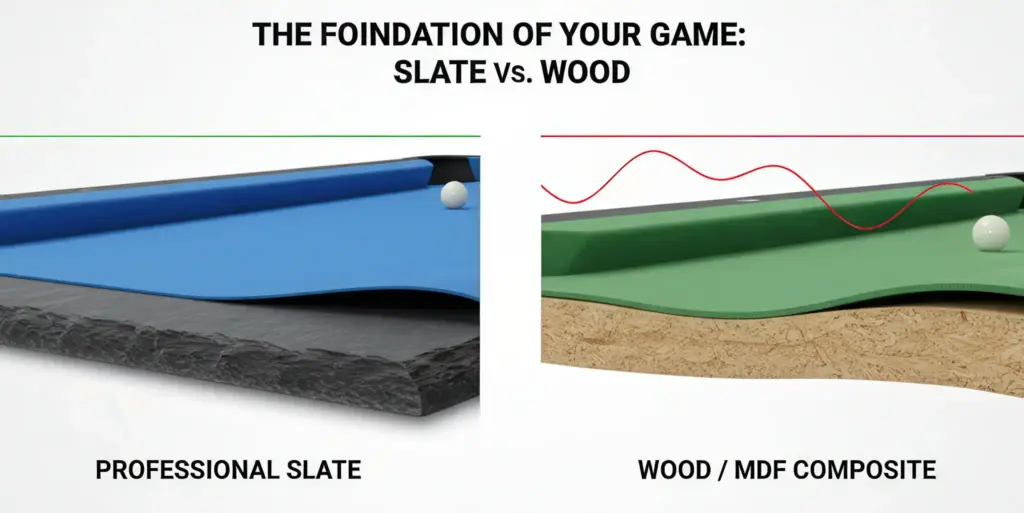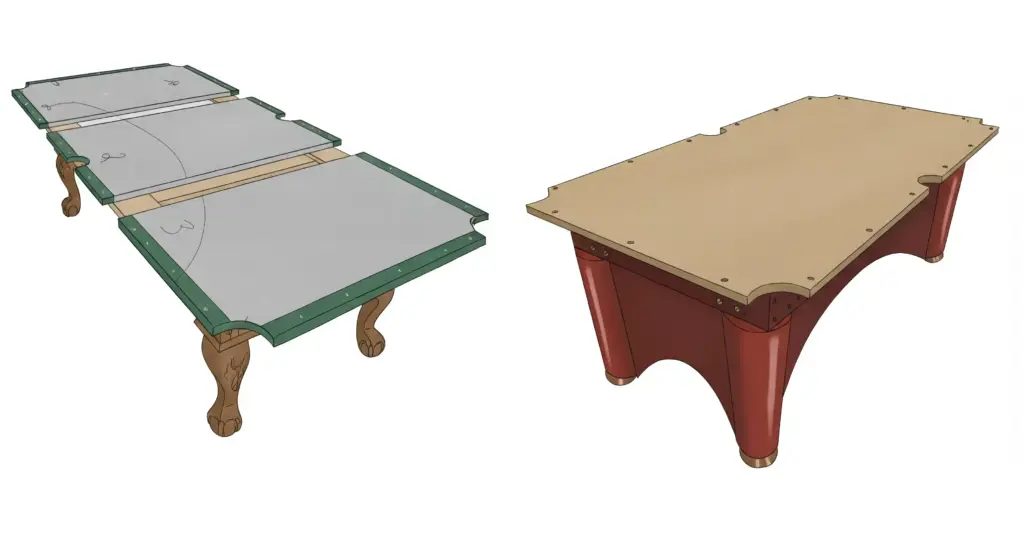Witnessing a player flawlessly clear the table in a single turn is one of the most impressive sights in billiards. To run the table in pool is the ultimate display of skill, strategy, and composure, leaving the opponent without another chance to shoot. It’s the mark of a dominant player, transforming a competitive match into a showcase of mastery. But achieving this feat consistently feels out of reach for many players. What separates those who occasionally get lucky from those who can strategically execute a table run under pressure?
Introduction
The ability to run the table pool isn’t just about sinking balls; it’s about complete control over the game. It signifies a deep understanding of pool fundamental skills, advanced competitive pool tactics, and a resilient pool mental game. Whether playing 8-ball, 9-ball, or straight pool, the goal remains the same: execute a perfect sequence of shots from break to final ball. This requires more than just good aim; it demands foresight, precision cue ball control, and the ability to navigate complex table layouts. This article, drawing on insights from competitive play analysis and expert knowledge, breaks down the essential elements needed to elevate your game and start making your own table runs a reality. Understanding these tactics is the first step towards dominating your matches.
The Foundation: Essential Pool Fundamental Skills
Before attempting complex sequences, mastering the basics is non-negotiable. Building the capacity to run the table pool starts here.
Stance and Grip
- A stable, balanced stance (feet shoulder-width apart, weight even) is crucial for minimizing body movement during a shot. Combine this with a relaxed, light grip on the cue; tension hinders a smooth stroke and compromises accuracy.
Aiming and Alignment
- Precision begins with aligning your head, eyes, stroking arm, and cue with the target. Visualize the shot line and the exact contact point. Techniques like the ghost ball method can enhance accuracy. Consistent practice on straight shots is key.
Smooth, Controlled Stroke
- A fluid stroke involves a deliberate backswing, often a slight pause, and smooth acceleration through the cue ball with a full follow-through. Avoid jerky movements and maintain body stability. This ensures predictable cue ball reaction, vital for pool position play.
Cue Ball Control (Position Play)
- This is arguably the most critical skill. It’s the ability to dictate the cue ball’s speed, spin (topspin, backspin, sidespin), and direction after impact. Mastering stun, follow, and draw shots allows you to leave the cue ball perfectly placed for the next shot in your sequence. Developing superior cue ball control separates average players from those who can consistently run out.
The Break Shot
- Especially in 8-ball and 9-ball, a powerful and accurate break is essential. The goal is to spread the balls effectively, ideally pocketing a ball, and controlling the cue ball for an opening shot. Proper technique generates power while maintaining accuracy. A good break sets the stage for a potential run.
Beyond Basics: Advanced Competitive Pool Tactics
With fundamentals in place, advanced strategies come into play. These competitive pool tactics are what professionals use to navigate complex situations and consistently run the table pool.
Pattern Play
This involves thinking several shots ahead, planning a sequence that considers future positions.
- Identify Key Balls:
Recognize balls that unlock position for later, crucial shots (like the game ball). - Address Problem Balls Early:
Deal with clusters or balls near rails early to avoid complications. - Keep it Simple:
Plan the most efficient path through the rack. Always think at least three balls ahead. Effective pool pattern play provides a roadmap through the table layout.
Advanced Position Play
This refines basic cue ball control for precise placement.
- Mastering Angles and Tangent Lines:
Understand the natural path of the cue ball and how spin alters it. - Using Rails:
Employ rails strategically to control speed and angle for specific positional outcomes. - Nuanced Spin:
Apply precise amounts of sidespin, topspin, or backspin to navigate tight areas and achieve desired cue ball paths.
Speed Control
Crucial for accurate pool position play and avoiding scratches.
- Develop Feel:
Gain an acute sense of the force needed for different shots and distances. - Vary Stroke Length:
Control speed by adjusting stroke length while maintaining smooth acceleration. - Precise Execution:
Master controlling the distance on follow, draw, and stun shots.
You’ve done the research, now it’s time to explore. Browse our curated collection of pool tables and find the model that’s right for you.
Ready to See the Collection?
Mastering Cue Ball Control and Position Play
Because cue ball control and pool position play are so vital to running the table, they deserve special emphasis. It’s not enough to make the current shot; you must actively control the cue ball to make the next shot easier.
Key Techniques
- Stun Shot:
Hitting the cue ball center or slightly below center to minimize roll after impact. Essential for stopping the cue ball or controlling short distances. - Follow Shot (Topspin):
Hitting above center causes the cue ball to roll forward after impact. Used to move the cue ball down-table. - Draw Shot (Backspin):
Hitting below center causes the cue ball to spin backward after impact. Used to bring the cue ball back towards you or control its angle off a rail. - Sidespin (English):
Hitting left or right of center imparts spin that affects the cue ball’s path off rails and, to a lesser extent, its path after hitting an object ball (throw). Used for fine-tuning position.
Understanding how speed interacts with these techniques is critical. A slow draw shot behaves differently than a fast one. Mastering these nuances allows you to navigate the table with intention, transforming difficult layouts into manageable run-out opportunities. Thinking about your leave (where the cue ball ends up) is just as important as pocketing the object ball.
The Inner Game: Mental Fortitude to Run the Table Pool
Technical skill alone isn’t enough. The pool mental game is often the deciding factor under pressure.
Focus and Concentration
- Maintain intense focus on each shot, blocking out distractions, past errors, or future possibilities. A consistent pre-shot routine helps center the mind.
Composure and Emotional Control
- Stay calm under pressure, after mistakes, or when facing difficult layouts. Manage frustration; don’t let negative emotions affect your next shot. Positive self-talk and visualization build confidence.
Mental Toughness and Resilience
- Possess a strong desire to win and refuse to give up. View mistakes as learning opportunities. Practice under pressure (leagues, tournaments) to build resilience. Bring competitive focus to your practice sessions.
Game-Specific Strategies: 8-Ball, 9-Ball, and Straight Pool
While core principles apply, specific game rules influence the best approach to run the table pool.
8-Ball Strategy
- Choose Wisely: Select the set (solids or stripes) offering the clearest path.
- Clear Sections: Often best to clear balls from one half of the table before moving to the other.
- Key Ball Identification: Plan position for key balls that lead to the 8-ball.
- Pattern Importance: Requires careful planning as a miss usually gives the opponent ball-in-hand.
9-Ball Strategy
- Lowest Ball First: Must always hit the lowest numbered ball first.
- Early Win Opportunities: Look for combination shots or caroms to pocket the 9-ball early.
- Premium on Position: Precise cue ball control is vital to get shape on the next sequential ball.
- Safety Play: Strategic safeties are more common if a run-out isn’t feasible.
Straight Pool Strategy
- High Runs: Goal is continuous scoring, requiring planning for break shots after 14 balls are pocketed.
- Cluster Management: Strategically break clusters during the run.
- Break Ball Position: Precise pool position play is critical to leave an ideal angle on the 14th ball to set up the break shot on the last ball.
- Endurance: Requires sustained focus and precision over potentially long runs.
Common Mistakes Preventing Your Run the Table Pool Attempts
Many factors can derail a potential run-out. Avoiding these common errors is crucial:
Execution Errors
- Insufficient chalking (leading to miscues, especially with spin).
- Raising or lowering the cue excessively (affecting accuracy).
- Unstable stance or bridge hand.
- Taking eyes off the ball during the stroke.
- Incorrect grip pressure (too tight or too loose).
- Improper speed control (too hard or too soft).
Strategic Errors
- Waiting too long to address problem balls (clusters, balls on rails).
- Trying for perfect position instead of taking a makeable shot with acceptable leave.
- Rushing shots or taking too long, disrupting rhythm.
- Overestimating ability and attempting low-percentage shots.
- In 8-ball: Failing to identify a clear pattern or key balls early.
Consciously working to eliminate these mistakes during practice and play will significantly increase your chances of completing runs.
Hypothetical Professional Run-Out Analysis
Analyzing how professionals navigate difficult situations highlights the application of advanced skills.
| Player (Hypothetical) | Match/Tournament | Game Type | Key Situation | Key Shots/Decisions | Learning Points |
| “Alex The Ace” | Championship Final | 9-Ball | Tough angle on the 8-ball, blocked path to the 9-ball | Executed a precise three-rail kick shot to pocket the 8-ball and land perfectly on the 9-ball. | Demonstrates advanced cue ball control and using the entire table for position. |
| “Maria The Maestro” | Invitational | 8-Ball | Cluster of three solid balls near the side pocket | Used a combination shot, pocketing one solid to dislodge the other two and create open shots. | Highlights effective combination shots for cluster management. |
| “David The Doctor” | Pro Tour Event | Straight Pool | Running a high rack, cue ball slightly out for break ball | Intentionally played a safety on the 14th ball, leaving the cue ball ideally positioned for the next break shot. | Emphasizes strategic safety play in straight pool for optimal break opportunities. |
FAQ
What is the hardest part about learning to run the table pool?
- For most players, developing consistent and precise cue ball control is the biggest challenge. It requires mastering speed, spin, and understanding angles to not just make the current shot, but to perfectly position the cue ball for the next one, and the one after that.
How important is the mental game in running out?
- Extremely important. Even players with excellent technical skills can falter under pressure. Maintaining focus, managing emotions after a mistake, and having the resilience to see the run through are critical components often overlooked in practice. The pool mental game separates good players from great ones.
Do I need different skills to run the table in 8-ball versus 9-ball?
- The fundamental skills (pool fundamental skills, cue ball control) are the same, but the competitive pool tactics and pool pattern play differ. 8-ball strategy focuses on clearing your set efficiently and planning for the 8-ball. 9-ball strategy emphasizes sequential play, precise position on the next ball, and potentially using combinations or safeties.
How often should I practice specifically for running the table?
- While all practice helps, dedicated drills focusing on pool position play, cue ball control (follow, draw, stun), and pattern recognition are essential. Aim to incorporate run-out drills into your regular practice routine, simulating game pressure where possible.
Let us handle the maintenance so you can focus on the fun. Book our white-glove service for everything from re-leveling to cloth replacement.
Expert Table Service
Conclusion
Achieving the ability to consistently run the table pool is a challenging but rewarding goal. It requires a dedicated fusion of rock-solid pool fundamental skills, intelligent competitive pool tactics like pool pattern play and advanced pool position play, and a strong pool mental game. By understanding the nuances of cue ball control, adapting strategies for different games like 8-ball strategy and 9-ball strategy, and consciously avoiding common pitfalls, you can significantly elevate your performance. The journey requires practice, patience, and a commitment to continuous improvement. Mastering these elements will not only increase your chances of running the table but will make you a more formidable and confident player overall.
For expert advice on improving your game and finding the finest pool equipment, including premium Brunswick and Olhausen tables, visit Hallmark Billiards’ showrooms in the Toronto and GTA area.





